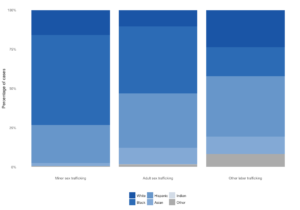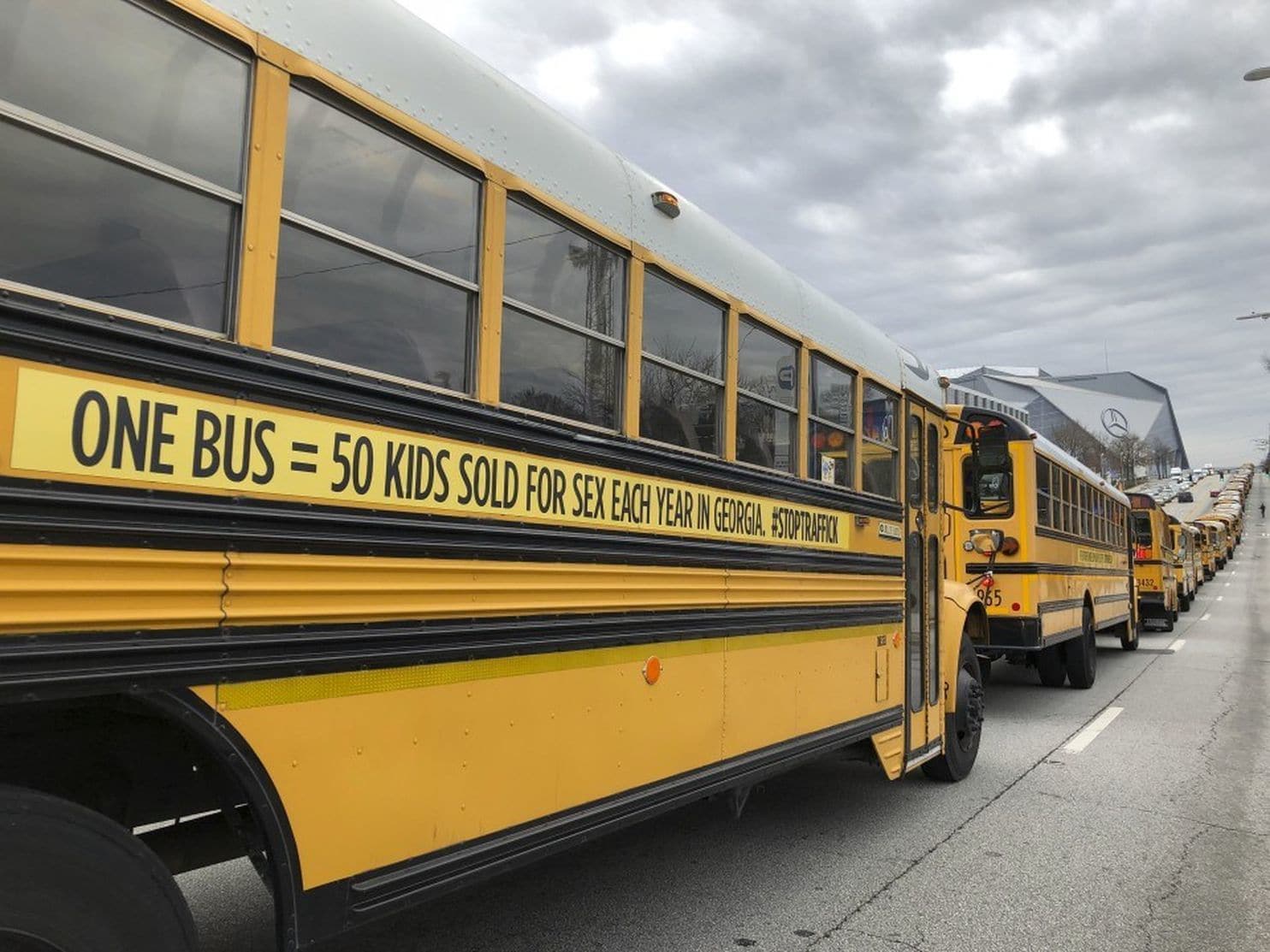By: Vanessa Bouché & Mark Daku – washingtonpost.com – January 11, 2019
Friday is human trafficking awareness day, a time dedicated to reflecting on the fact that an estimated 40.3 million people in the world are still in modern forms of slavery. The United Nations defines human trafficking as the recruitment, transportation, transfer, harboring or receipt of people by improper means (such as force, abduction, fraud or coercion) for an improper purpose, including forced labor or sexual exploitation. This is a global problem, and while the vast majority of human trafficking occurs in the developing world, a surprising amount of trafficking and exploitation happens in our own backyards.
Researchers and activists rightly pay attention to the victims of human trafficking, and the numbers are staggering. Polaris — a nonprofit organization that contracts with the U.S. government to run the National Human Trafficking Hotline — has been collecting data on human trafficking victims since 2002 and has identified approximately 21,000 victims in the United States.
However, trafficking victims are only part of the whole story. With funding from a Department of Justice/National Institute of Justice grant, one of us (Vanessa Bouché) collected data on over 900 federally prosecuted human trafficking cases, including demographic data on the offenders in these cases.
Here’s what we found: Some types of trafficking are prosecuted more heavily than others — and young, black, male traffickers are more likely to participate in those kinds of trafficking.
What kind of human trafficking gets prosecuted most often?
The Trafficking Victims Protection Act (TVPA) includes sentencing guidelines for human trafficking in the United States. Sex trafficking of a minor under age 14 is punishable by a statutory mandatory minimum of 15 years in prison; sex trafficking a minor age 14 to 18 carries a statutory minimum of 10 years; and both carry a maximum sentence of life in prison. Human trafficking for other purposes — forcing people to labor for no pay in domestic service, factories, restaurants and so on — have no mandatory minimum.
Cases involving sex trafficking of minors are the easiest to prosecute successfully. That’s because legal minors cannot consent to sex, much less sex for money. Prosecutors merely have to prove that the trafficker offered a minor for sex; there’s no need to show evidence of force, fraud or coercion, as there is to get a conviction for other forms of trafficking.
As a result, prosecutors are highly motivated to prosecute sex trafficking of minors — and don’t have the same incentives to pursue cases of adults trafficked for sex or labor.
[International agreements to prohibit child labor don’t always work. Here’s why.]
The TVPA, then, gives the Justice Department clear guidance about which kinds of trafficking are the highest priority: Sex trafficking of minors is most important, and labor trafficking is least. And federal prosecutors have behaved accordingly, prosecuting more than twice as many minor sex-trafficking cases as adult sex-trafficking and labor-trafficking cases combined. Between 2005 and 2015, 638 minor sex-trafficking cases were prosecuted federally; only 321 adult sex-trafficking cases and 83 labor-trafficking cases went to court.

Data from federally prosecuted human-trafficking cases (2005 to 2015, available from HumanTraffickingData.org.
Figure: Mark Daku)
That results in racial disparities in prosecutions
First, between 2005 and 2015, 57 percent of the defendants in minor sex-trafficking cases are black — compared with 43 percent in adult sex-trafficking cases and only 18 percent in labor trafficking.
Second, defendants in minor sex-trafficking cases are, on average, younger than those in adult sex-trafficking and labor-trafficking cases. The average age of a defendant in a minor sex-trafficking case is 31, while it’s 33 and 40 respectively for adult sex- and labor-trafficking cases.
Last, 76 percent of defendants in minor sex-trafficking cases are male, while that’s true for only 71 percent and 59 percent of adult sex- and labor-trafficking defendants, respectively.
In other words, defendants in cases of sex trafficking of minors — the type of trafficking case that carries the highest penalties and is most likely to be prosecuted — are significantly more likely to be young, black and male.

Data from federally prosecuted human-trafficking cases (2005-2015, available from HumanTraffickingData.org.
Figure: Mark Daku)
There’s no question that human trafficking in the United States is a serious problem. Even so, our anti-trafficking criminal laws are written in such a way that makes it far more likely that young black men are prosecuted significantly more than other perpetrators of human trafficking.
To see this article, click read more.
Source: Who’s disproportionately prosecuted for human trafficking? Young black men. – The Washington Post
 Listen Online
Listen Online Watch Online
Watch Online Find a Station in Your Area
Find a Station in Your Area










 Listen Now
Listen Now Watch Online
Watch Online
